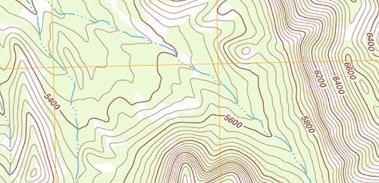Basic Versus Advanced Airway Management: Keeping It Simple (at First)
Emergency MedicineIn the backcountry, where hospitals are likely many miles away and help isn’t “just around the corner,” airway management becomes a high-stakes priority. After all, the statistics are against the patient. Without an open, clear airway, that patient has a zero percent chance of survival.
Whether it’s a fall, an allergic reaction, choking, or a drowning, keeping the airway open is a life and death proposition. Wilderness medicine demands quick thinking, decisive action, and a solid grasp of airway basics, because you’re the first, and perhaps only, responder.
This post brings you up to speed on airway management basics with a focus of first employing the simplest and least invasive methods for opening the airway.
What Is the Airway?
The airway is a tunnel connecting the mouth and nose to the lungs. It ends at the alveoli, which are the tiny air sacs in the lungs that facilitate the exchange of gases, primarily oxygen and carbon dioxide. As long as this tunnel remains open, a person can breathe. If the tunnel collapses or is blocked at any point, breathing ceases or is restricted to some degree.
Healthy humans maintain an open airway by holding their head upright, swallowing their secretions, controlling their tongue, coughing, spitting, and otherwise emptying the tunnel of everything but air. Whenever the airway collapses due to illness or injury or is blocked by solids or liquids “going down the wrong pipe” and getting stuck there, medical intervention is required. That’s where you, the emergency medical technician (EMT), or someone else who’s received the relevant training, must step in to clear the airway.
The interventions used by the EMT can be divided into Basic (simpler and less invasive) and Advanced (more complex and invasive).
Basic Methods for Clearing the Airway
When someone can’t breathe or is struggling to do so, you should use the simplest, least intrusive method necessary to open the airway. Basic methods include the following: (more…)
Photog Cites Loss of Touch with Nature: ‘We’re creating an illusion for ourselves’
NCOAE RecommendsIn a recent CNN article by Rebecca Cairns and London-based photographer Zed Nelson, the reader is invited to reflect on how we interact with nature, and how much of that “nature” is staged. Nelson’s project, The Anthropocene Illusion, takes viewers on a global journey to see the ways we simulate wild places and wildlife while often turning away from the real thing.

Here at The National Center for Outdoor & Adventure Education (NCOAE), this type of exploration resonates deeply with the part of our mission that speaks to inspiring stewardship and facilitating authentic experiences in the natural world.
Nelson’s photographs, which are featured in Cairnes article, capture everything from artificial safari parks to lion farms in South Africa, revealing the uneasy truth about how human-made versions of nature have sadly become commonplace. As Cairns writes:
“We’re creating an illusion for ourselves… a stage-managed version of nature where we feel we’re connecting with the natural world, but we’re not.”
Our own observations echo this. We surround ourselves with nature-themed decor ranging from beach-printed bedcovers to desktop wallpapers, all offering a fleeting sense of connection. Yet these are safe, convenient stand-ins that avoid the friction of mud, insects, unpredictable weather, and the physical challenge of being outdoors. Over time, this can (more…)
Navigating with a Map and Compass: The Bare Basics
Backcountry PrepBatteries die. Cell phones lose connectivity. Even satellite service can be unpredictable. But a map and compass? You can always count on these two “old schools” tools to discover where you are and how to get to where you’re going.
Truth is, navigating with a tried and true map and compass is an essential outdoor skill. Real explorers don’t ask Apple Maps or Google Maps for directions!
In this post, I bring you up to speed on the basics of using a map and compass in the backcountry. Here’s what you need to know:
Start with a Detailed Topographical Map
The first step is to obtain a map. If all you’re planning to do is hike well-established paths in a park, a basic trail map is all you really need. However, when you’re traveling off-road and off-path, you should have a topographical map. A topographic map shows the physical features of the land, especially its shape and elevation, as shown below.

A topographical map is one of the most useful tools for wilderness navigation because it helps you visualize the terrain before you ever set foot on it.
Free Topo Maps: If you’re traveling in the United States, the U.S. Geological Survey offers free topographical maps you can download to print at US Topo. Another option is to purchase a gazetteer (a geographical “directory”) for each state in which you’re planning to travel.
Once you have your map and before you begin your backcountry or wilderness expedition, open it and familiarize yourself with its features: (more…)
TALK TO US
Have any further questions about our courses, what you’ll learn, or what else to expect? Contact us, we’re here to help!